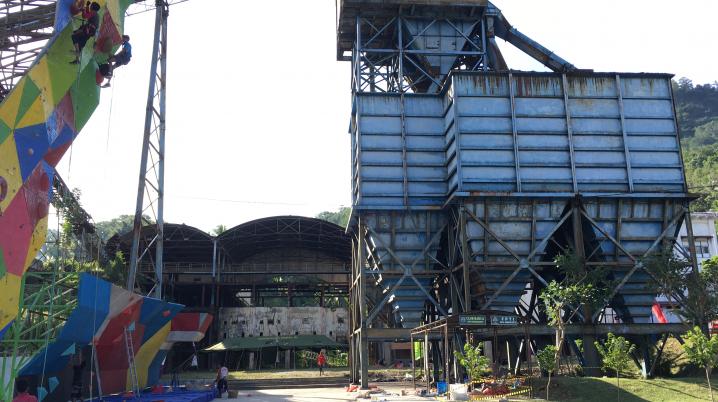
A shared future
“What are your thoughts regarding the discussions about the statue of J.P. Coen in Hoorn?”, my mother asks. For a moment, I am speechless. Although my mother was born in a time when her native country was still called the Dutch East Indies and she has lived in the country of the former coloniser for more than half a century, we had never spoken about the Dutch perception of the colonial past.
In our family, the roles seemed clearly defined. My grandmother talked about what it was like to be oppressed by the Dutch, her children preferred to focus on the future, and the grandchildren weren’t quite sure what to make of it. It took therefore a while before I started to better understand the long history shared between the Netherlands and Indonesia, and the traces that this past has left behind. Some of these traces could be seen as shared heritage, i.e. heritage that stems from a shared past, such as the mining system in Sawahlunto, the art collection of the Dutch colonial administration in the government palaces in Jakarta (former Batavia) and Bogor (former Buitenzorg) and loanwords in Dutch and Indonesian, like piekeren (pikir) and losmen (logement).
Indonesia is not the only country with which we share a past. International connections have always been important for the Netherlands to grow and flourish. Sometimes we were approached, because of specific knowledge and skills, and often we invited ourselves, driven by a desire for wealth and power. And as much as I know that a Dutch presence continues to resonate in many places today, I am moved every time the shared past manifests itself, such as in the former leper colony designed by Dutch architects near Pretoria (South Africa), in the memory of the Pinkster festivities celebrated by enslaved Africans in New Netherland (present-day United States), or in the records of Javanese and Indian contract workers in Suriname. Time and time again, shared heritage shows how our country’s history is intertwined with that of other countries and cultures, and how without this knowledge we aren’t able to properly understand our world today.
This is why the Netherlands chooses to work with other countries on shared heritage. Cooperation means you need to search for a shared interest, for which you are required to delve into other perspectives, questions and approaches. After all, each country views its shared past with the Netherlands and the heritage related to this past in varying ways. Sometimes this heritage relates to a past that has largely disappeared from a country’s collective memory. In other cases, countries give memories new impetus by, for instance, reconstructing Dutch East India Company (VOC) buildings. But even when shared history is ubiquitous, the meanings attributed to shared heritage are not self-evident.
Nonetheless, it is not difficult to find a basis for cooperation. After all, each country cares for its heritage and thus faces similar issues, such as making historic inner cities more liveable, protecting shipwrecks and managing collections. By exchanging knowledge with each other, shared heritage acquires new meaning. For instance, we learned from colleagues in Suriname how important it is to involve young people in the restoration of the Maarschalkerweerd cathedral organ in Paramaribo since, after all, they are the ones who will pass on this heritage to future generations. Similarly, other countries are interested in how the Netherlands preserves heritage by endowing historical buildings with new functions, and how citizens, alongside public and private parties, can play an important role in this. In this way, while the shared past provides a starting point for collaboration, the focus is mainly on shaping the future together.
While thinking about my mother’s question, this is what comes to my mind. Apparently, when working with other countries on shared heritage, it isn’t difficult for us to accept that our perspective about the past isn’t decisive. We are open to other questions and approaches and, despite all the differences, we are able to find shared interests without difficulty. It is only logical that this works differently in our own country: we are all part of the same society here and each one of us has something to lose. Nonetheless, each one of us has something to gain as well, namely a better understanding of the past and its impact on the present, an understanding of what kind of society we wish for ourselves and how we could achieve this. In the Netherlands, too, I think it’s important to first try to understand each other, learn from and with each other and look for common interests. After all, this is about our shared future.
Jinna Smit is Programme Director Shared Cultural Heritage at the Cultural Heritage Agency of the Netherlands (RCE). Together with the National Archives of the Netherlands, DutchCulture, the Dutch embassies in Australia, Brazil, India, Indonesia, Japan, Russia, Sri Lanka, South Africa, Suriname and the United States, and many other organisations in and outside the Netherlands, the RCE works towards the sustainable future of cultural heritage.
This article was written by Jinna Smit, and it was originally published in Dutch on the website of the Maand van de Geschiedenis. The article was translated by Sofia Lovegrove.

